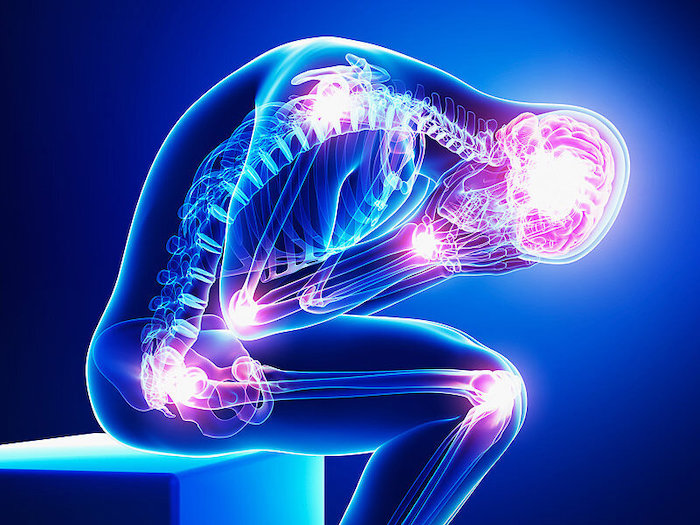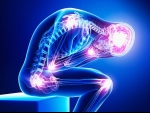
If you find being in pain has left you feeling stressed, anxious, depressed, or a little grumpy, you aren’t alone. These emotions are very common among people living with ongoing pain.
Pain can upend every aspect of our lives -- from how we move, sleep, think, feel, and interact with others to earning a living and doing the things that we love most. That can be an awful lot to deal with. A field of psychology called pain psychology can help.
To be clear, when we say “pain psychology,” we’re not suggesting that pain is “all in your head” or that “the pain is not real.” Nothing could be further from the truth. This form of psychology acknowledges and addresses both the emotional and physical consequences of pain and aims to help patients get to a better place at a deeper level.
Pain psychology therapies for the treatment of chronic pain have been well-established for decades. Past studies have shown the importance of utilizing psychological-based pain treatments for a whole host of painful conditions, including low back pain, headaches, fibromyalgia, and even arthritis. Most experts don’t view pain psychology treatment as a stand-alone therapy for chronic pain, but rather as one very important and complementary part of a more comprehensive approach. Integrating different types of treatments is sometimes referred to as "multi-modal" or "multidisciplinary," and it speaks to the complex nature of how pain impacts the human experience.
So, what are some examples of pain psychology treatments and how can they help?
- Cognitive-behavioral therapy (CBT). The most studied and well-established psychological treatment used in multidisciplinary pain care, CBT is a type of psychotherapy that focuses on changing unhealthy thought patterns that may be exacerbating the experience of pain or mood problems like depression and anxiety. The theory behind CBT is that how we feel is influenced by how and what we think. By creating more positive thought processes, we can better manage pain. One of the goals of CBT treatment is to help patients become more effective problem solvers when faced with challenging life situations.
- Acceptance and commitment therapy (ACT). The approach behind ACT is to gain acceptance of one’s inner feelings and deeper emotions, even if they are troubling, and to learn to not let those feelings stand in the way of growing and evolving in a more positive direction. ACT can give patients tools to help them problem-solve and make impactful changes in their lives, no matter how difficult the pain problem may be. ACT differs from CBT in that you are not reframing your thoughts and feelings, but instead simply observing them while still working toward the desired goals.
- Mindfulness. Based on ancient meditation practices, Jon Kabat-Zinn is credited with leading the modern mindfulness movement as a tool to alleviate pain, stress, suffering, and depression. Mindfulness training focuses on being in the present moment, as opposed to being distracted or overwhelmed by thoughts about the past or the future. Being non-judgmental while paying attention to our present thoughts and feelings is an important part of practicing mindfulness. Mindfulness seems to help quiet an over-activated nervous system, and studies show promising results for its role in treating chronic pain. Mindfulness-based stress reduction (MBSR) is a formal course developed to help with training and is now available in many communities.
- Relaxation training. Any approach that can help calm an over-activated or overly stressed nervous system has the potential to relieve tension and pain in the body. Learning some simple breathing exercises can be a great tool to find relief during a challenging moment. Biofeedback is an example of a more formal relaxation approach, where monitors can provide direct feedback about bodily functions, like heart rate, as a tool to learn to control how the body responds and to then use this control as a way of tamping down the experience of pain.
In case you are wondering if any of this can really help, here are some tips on getting the most out of pain psychology treatment:
- Find the experts. Not all psychologists and counselors have a background in treating chronic pain. Seek one who specializes in working with pain patients and is willing to make better pain management the focus. Consider using telehealth resources if you have trouble finding a pain psychologist nearby.
- Build a toolbox. Once you start your treatment, start to make a list of the different things you are learning and working on. As you get more confident, make these techniques part of your toolbox, and a trusted resource for navigating all of the challenges and rough patches associated with your pain.
- Manage flare-ups. Make sure to put your toolbox to good use on bad days. Pain flare-ups can be exacerbating, but here is a chance to use pain psychology and relaxation techniques to quiet down these episodes so you can move on with your day again.
- Change your communication. Relationships with spouses, family members, and friends can be adversely affected when you are in pain. A good pain psychologist can help you learn communication strategies that will help you better educate others about what you are going through while also getting better connected with them.
- Practice self-care. Sometimes the first step in helping others or accomplishing meaningful goals is to take great care of yourself. With levels of stress, depression, anxiety, and substance abuse around the country higher than ever consider using pain psychology techniques as an important way of not letting your cup get too empty. And if insomnia has set in, remember many of these techniques have been shown to improve sleep, too.
If you have never considered pain psychology before, now might be a great time to make it a valuable part of your pain relief plan.
Precision Pain Care and Rehabilitation has two convenient locations in Richmond Hill – Queens and New Hyde Park – Long Island. Call the Richmond Hill office at (718) 215-1888, or (516) 419-4480 for the Long Island office, to arrange an appointment with our Interventional Pain Management Specialist, Dr. Jeffrey Chacko.













